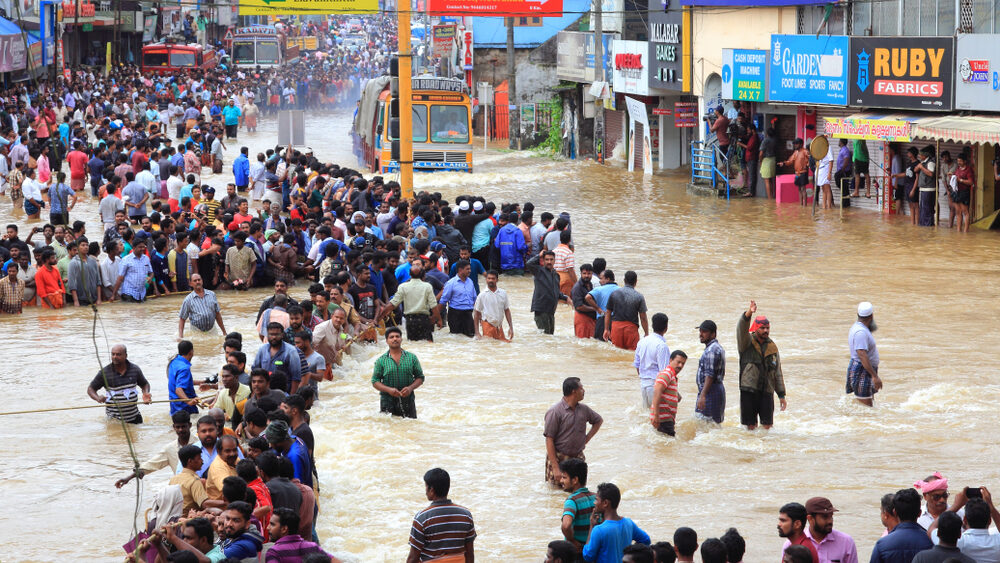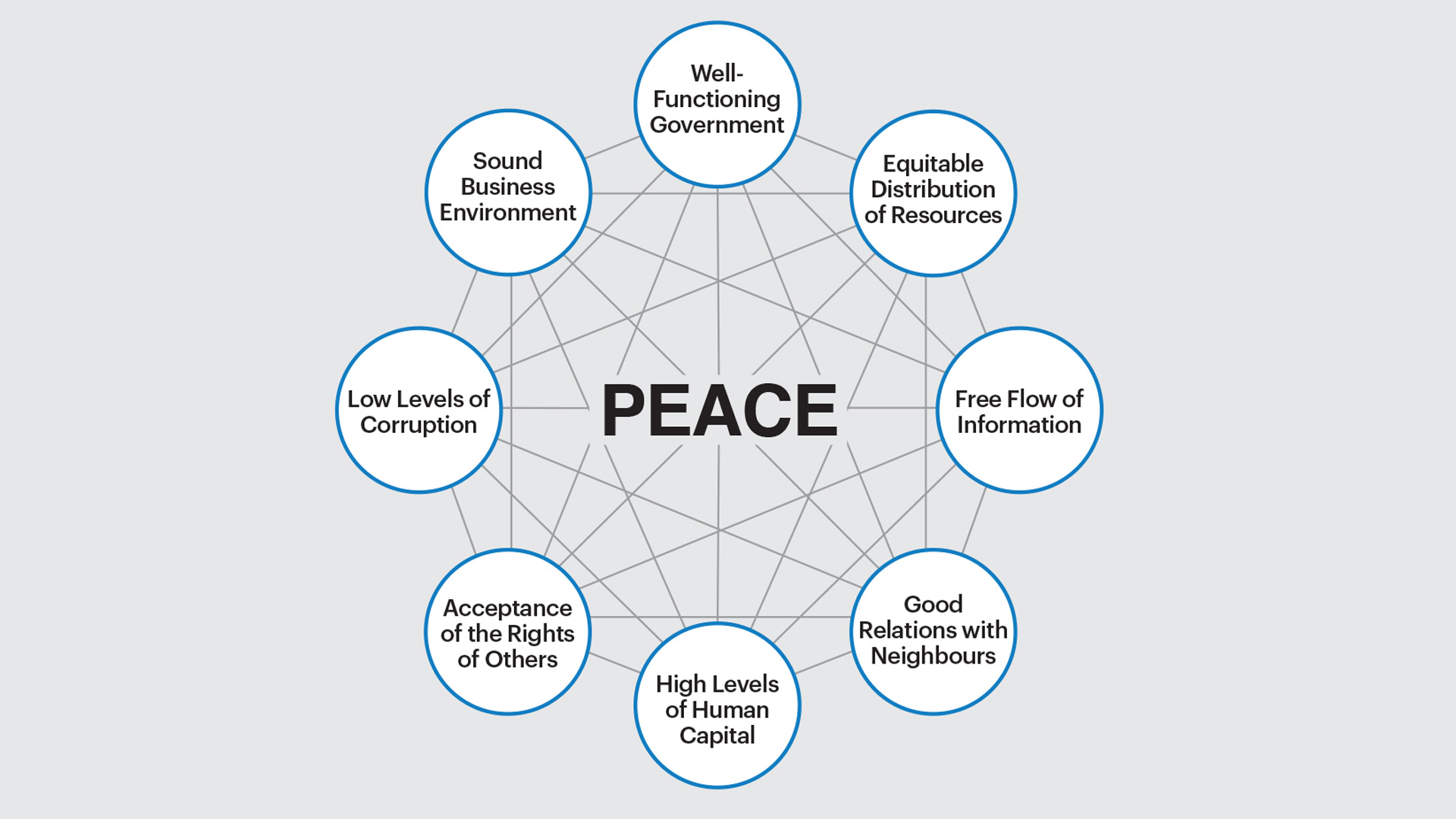Each year the International Day of Peace is observed around the world on 21 September. The UN General Assembly has designated this as a day devoted to strengthening the ideals of peace, through observing 24 hours of non-violence and cease-fire. Never has our world needed peace more.
This year’s theme is ‘Actions for Peace: Our Ambition for the #GlobalGoals’. It is a call to action that recognises individual and collective responsibility for fostering peace. Fostering peace contributes to the realisation of the Sustainable Development Goals (SDGs), and achieving the Sustainable Development Goals will create a culture of peace for all.
UN Secretary-General António Guterres said, “Peace is needed today more than ever. War and conflict are unleashing devastation, poverty, and hunger, and driving tens of millions of people from their homes. Climate chaos is all around. And even peaceful countries are gripped by gaping inequalities and political polarisation.”

The Sustainable Development Goals (SDGs) are an ambitious set of 17 targets agreed upon by all United Nations Member States in 2015. They form part of the 2030 Agenda for Sustainable Development and are aimed at addressing a series of global challenges we face. The hope is that, by meeting these goals, we can pave the way for a world that’s both sustainable and fair by 2030.
The unique aspect of these goals is their interconnected nature. It’s hard to achieve progress in one area without considering the others. This global blueprint is intended to guide nations in battling some of the most pressing issues of our time, from poverty and climate change to inequality and environmental harm.
The Sustainable Development Goals represent the growing recognition of the way violence and insecurity have set back development in many areas of the world. Of all the 17 Goals, Sustainable Development Goal 16 is the most ambitious goal of the SDGs.
Goal 16: Promote peaceful and inclusive societies for sustainable development, provide access to justice for all and build effective, accountable and inclusive institutions at all levels
Among the 17 interlinked goals, Goal 16 stands out, championing the need for societies to be peaceful, just, and inclusive. It underscores the profound impact that conflict and violence can have on developmental progress.
In order to address the drivers of violence and conflict, beyond the traditional development pillars of health, education and combating poverty, there’s a call to enhance governance, address inequality, reduce violence, and strengthen institutions – all of which are central themes of Goal 16. IEP terms this focus on the drivers of peace as ‘Positive Peace’, or the “attitudes, institutions and structures which create and sustain peaceful societies.”
Tackling Goal 16 is no straightforward task. It’s multifaceted, political and demands a comprehensive approach. Without peaceful societies, the world will be unable to reach the broader SDG targets. IEP’s Positive Peace creates an environment in which development goals are more likely to be achieved.

In peace studies, two main definitions emerge: Negative Peace and Positive Peace. Negative Peace simply refers to the absence of violence or its fear, a straightforward definition that many resonate with. It’s this definition that forms the basis for the Global Peace Index (GPI). On the other hand, Positive Peace is a deeper concept. It embodies a society’s ability to address citizens’ needs and resolve disputes without violence. The Institute for Economics & Peace (IEP) frames Positive Peace as the attitudes and structures fostering peaceful societies.
Conflicts arise in daily life, be it personal or on broader ethnic or political scales. Yet, most don’t spiral into violence. This is often due to societal attitudes discouraging violence, or legal systems handling grievances. Positive Peace steers societies towards non-violent resolutions and adaptability.
The Global Partnership for the Prevention of Armed Conflict (GPPAC) notes that when conflicts become violent, it usually signals a system’s failure to manage differing interests. The Positive Peace framework identifies societal elements that avert these collapses, using their link to peaceful conditions as a guide.
What sets IEP’s approach apart is its empirical and data-driven method in understanding Positive Peace. There are few known empirical and quantitative frameworks available to analyse Positive Peace. Historically, it has largely been understood qualitatively and based on idealistic concepts of a peaceful society. Instead, IEP’s Positive Peace framework is based on the quantitatively identifiable common characteristics of the world’s most peaceful countries.
In order to address the gap in this kind of quantitative research, IEP utilises the time series data contained in the GPI, in combination with existing peace and development literature to statistically analyse the characteristics peaceful countries have in common. An important aspect of this approach is to avoid value judgement and allow statistical analysis to explain the key drivers of peace.

Violence and conflict play a major role in challenging development outcomes. It is well understood that low-income, fragile and conflict-affected countries recorded lower levels of achievement on the SDGs. Addressing these issues will be critical as we progress towards achieving all 17 SDGs by 2030. Goal 16 consists of 12 targets, measuring direct violence, drivers of violence, governance, and justice. The 17 Goals are universal, interconnected and need to be viewed holistically.
Recognising this interconnectedness, SDG16 reflects that creating peaceful, just and inclusive societies requires simultaneous efforts in other interlinked SDGs. The emphasis on interconnectedness between prevention, sustaining peace and development is in line and compatible with IEP’s Positive Peace framework which views societal development as being systemic.
Goal 16 is dedicated to the promotion of peaceful and inclusive societies for sustainable development, the provision of access to justice for all and building effective, accountable institutions at all levels. The Goal is the outcome of the international community’s acknowledgement that peace is fundamental to development.
By annually measuring the levels of peace in 163 countries and territories worldwide through the GPI, IEP has shown that peace is not an abstract concept but something that can be tracked and actioned. The recognition by the international community that peace can, and should, be measured for development outcomes is indeed a very positive transition.
Global change begins small: the actions of just one person can have a profound impact on the many. At IEP we are dedicated to strengthening social systems – in community, in business, in society – building into long term, sustainable peace. We’ve been joined on the journey by a community of millions who believe in a world where everybody has an equal opportunity to thrive.
Take action today: Explore our curated collection of insights and inspirations to strengthen the Pillars of Positive Peace.
Join a movement of changemakers: Deepen your knowledge of Positive Peace and put into action initiatives that further build peaceful and harmonious communities by becoming an IEP Peace Ambassador.
Apply to become an Ambassador →
Empower yourself and make a meaningful difference: Acquire the knowledge and skills necessary to start your journey to becoming a peacebuilding professional.
Get to know our research: Gain deeper knowledge of Positive Peace and IEP’s data-driven research.